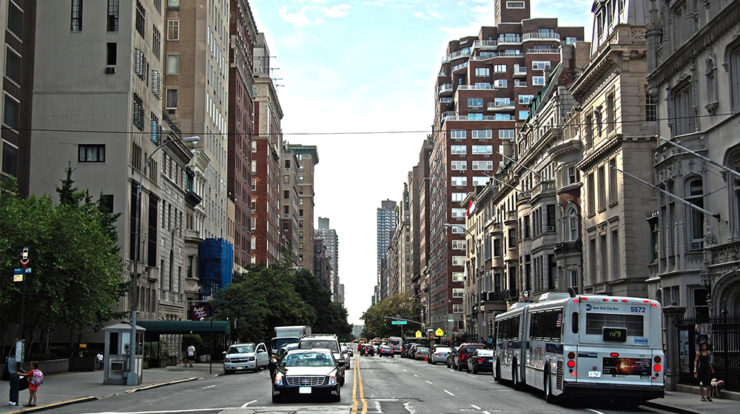

Project Profiles
Buildings Technical Working Group Report
Chris Garvin
Share
Learn more about our environmental strategy work and services by emailing us at [email protected]. Follow the conversation on twitter: @TerrapinBG.
Climate change caused by greenhouse gas emissions from human activities is perhaps the most dire challenge our world faces in this century, and its impact will deeply affect dense, coastal cities like New York. To mitigate the risks of climate change, in 2007, former Mayor Michael Bloomberg set an ambitious goal for the City to cut greenhouse gas emissions by 80% from 2005 levels by the year 2050 (80 by 50). The city has already reduced emissions by 19% since the announcement of the 2007 sustainability plan.
Buildings account for nearly three-quarters of all emissions in New York City, making tackling building energy use and emissions a significant part of the 80 by 50 implementation plan. In September 2014, Mayor de Blasio released One City: Built to Last, a sweeping ten-year plan to retrofit public and private buildings to dramatically reduce the City’s contributions to climate change, while creating green jobs and generating operational savings.
New York City Economic Development Corporation (NYCEDC) selected HDR, the architecture, engineering and consulting firm, to identify greenhouse gas (GHG) emission reduction strategies. HDR’s multidisciplinary team included Terrapin Bright Green, Code Green, Jon Dickinson, AccuCost and CSA Group.
Terrapin, as part of the HDR team, conducted the technical study to validate and create technical pathways for GHG reductions needed from the building sector to achieve a 30% reduction in building-based emissions by 2025 (30×25) and an 80% reduction in citywide GHG emissions by 2050 (80×50). In order to provide the City with an actionable plan, the HDR team leveraged existing data sets collected under mandatory local laws, including building-level benchmark data covering over 2.1 billion-square feet and building system level audit data, to analyze patterns of current energy performance and energy consumption of buildings. The study also included a validation of the City’s Pathways to Deep Carbon Reductions report.
The technical study supported the One City: Built to Last Technical Work Group (TWG), comprised of the US Green Building Council, real estate interests, and industry experts who are helping the City develop the right mix of policies and programs needed to transform the building stock and place the City on the pathway to meet its GHG reduction goals. The Technical Working Group recently published its recommendations in the Buildings Technical Working Group report. Download the full report here.
*Header image copyright Juan Luis/Flickr. Feature image copyright Josh Hallett/Flickr.
Filed under:
Chris Garvin
As a partner, Chris is an architect and sustainability leader focused on systemic thinking to address challenges in the built environment. Chris believes we can learn how to live on this planet if we start listening to nature again.
Topics
- Occupant Comfort
- Materials Science
- Speaking
- LEED
- Terrapin Team
- Phoebe
- Community Development
- Greenbuild
- Technology
- Biophilic Design Interactive
- Catie Ryan
- Spanish
- Hebrew
- French
- Portuguese
- Publications
- Carbon Neutrality
- Environmental Values
- Conference
- Psychoacoustics
- Education
- Workshop
- Mass Timber
- Transit
- Carbon Strategy
- connection with natural materials
- interior design
- inspirational hero
- biophilia
- economics of biophilia
- Sustainability
- Systems Integration
- Biophilic Design
- Commercial
- Net Zero
- Resorts & Hospitality
- Energy Utilization
- Water Management
- Corporations and Institutions
- Institutional
- Ecosystem Science
- Green Guidelines
- Profitability
- Climate Resiliency
- Health & Wellbeing
- Indoor Environmental Quality
- Building Performance
- Bioinspired Innovation
- Biodiversity
- Residential
- Master Planning
- Architects and Designers
- Developers and Building Owners
- Governments and NGOs
- Urban Design
- Product Development
- Original Research
- Manufacturing
- Industrial Ecology
- Resource Management
- Sustainability Plans
- Health Care


